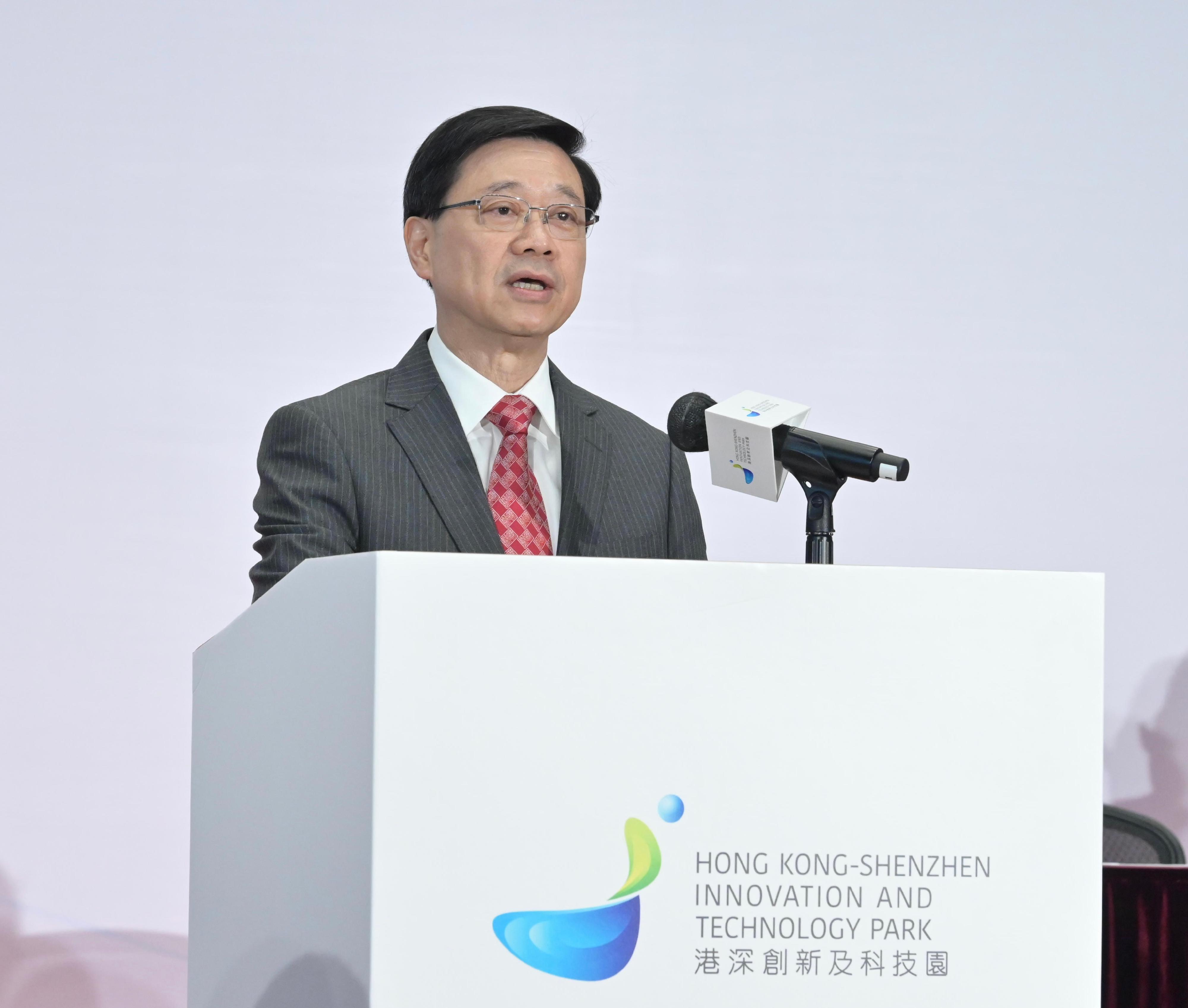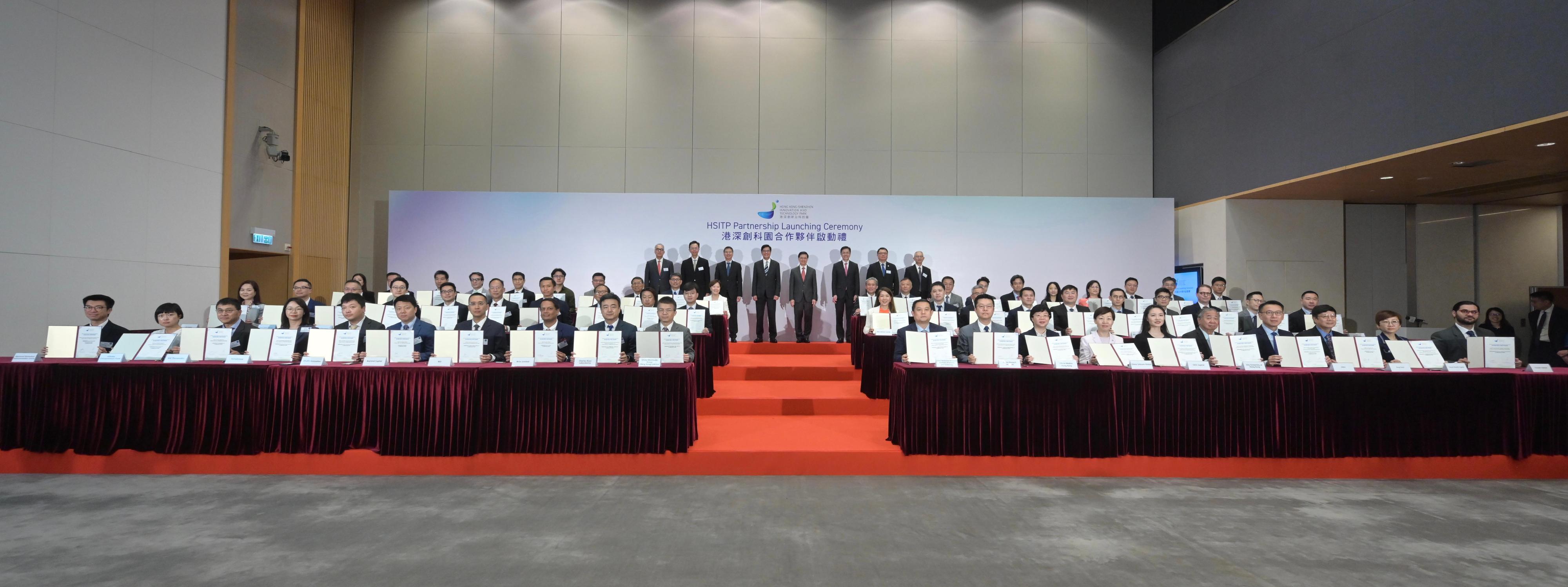The Hong Kong-Shenzhen Innovation and Technology Park Limited (HSITPL) today (April 18) held the Hong Kong-Shenzhen Innovation and Technology Park (HSITP) Partnership Launching Ceremony and signed Memoranda of Understanding (MOUs) with some 60 partners from nine economies.
Witnessed by the Chief Executive, Mr John Lee; the Acting Financial Secretary, Mr Michael Wong; and the Secretary for Innovation, Technology and Industry, Professor Sun Dong, representatives of some 60 enterprises signed the MOUs with the Chief Executive Officer of the HSITPL, Mr Vincent Ma, at the launching ceremony to officially become partners with the HSITP, marking a significant milestone of the Park entering the operational phase.
"With its strategic location, the Park will form part of the Shenzhen-Hong Kong Science and Technology Innovation Co-operation Zone to become a key area of I&T (innovation and technology) development that transcends beyond our boundary with the Mainland. With the Park fast approaching the operational phase, it will integrate with and help drive our national development. Hong Kong will continue to join hands with Shenzhen to work out various innovative and cross-boundary facilitation measures for the benefit of our partners in the Park and beyond," said Mr Lee.
"Under the unique 'one country, two systems' principle, Hong Kong enjoys the rule of law, a free and enterprising business environment, world-class infrastructure, a robust financial system, as well as established R&D (research and development) capabilities with our world-renowned institutions. Hong Kong has all it takes to create new quality productive forces."
Professor Sun said, "Among the I&T companies which will be signing MOUs on their partnership with the HSITPL today, about a quarter of them are from overseas, and 24 companies are new to set foot or expand business in Hong Kong. The diverse portfolio of partnership enterprises highlights Hong Kong's unique advantage as an international city, casting a big vote of confidence in the development of the HSITP, as well as the I&T industry in Hong Kong.
"To realise the goal of becoming an international I&T centre, fostering collaborative efforts among the Government, industry, academic, research, and investment sectors is of utmost importance. The ceremony today signifies the collective efforts towards achieving our shared vision."
The Co-operation Zone, which consists of the 87-hectare Hong Kong Park (i.e. HSITP) and the 300-hectare Shenzhen Park, is one of the major co-operation platforms among Guangdong, Hong Kong and Macao under the 14th Five-Year Plan. The HSITP will be developed in two phases from west to east. The Chief Executive in his Policy Address in 2022 put forward the suggestion to explore the expedited development of the HSITP and enhance its function. With the completion of the planning stage, the first phase of the HSITP has a total floor area of up to 1 million square metres and contains various clusters to establish a diverse I&T ecosystem with different industry themes, including life and health technology, artificial intelligence, advanced manufacturing, and industry, academic and research sectors. The first three buildings of the first batch will be completed gradually from the end of 2024. The Hong Kong Special Administrative Region Government will continue to support the construction of the HSITP, as well as the HSITPL's efforts in taking forward the relevant leasing and investment promotion work, with a view to promoting jointly with Shenzhen the advantages of "one zone, two parks" under the "one country, two systems" principle in the Co-operation Zone.


